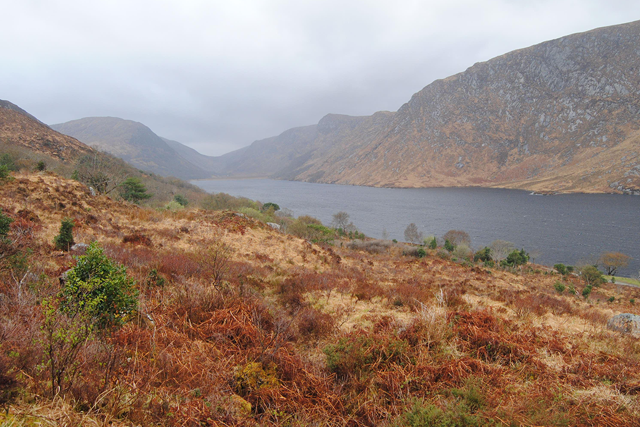by Daniel Mac Carron
In a review of my book of Donegal short stories entitled, ‘The Mountains of Donegal,’. WD Flackes, writing in ‘The Universe’, which is a religious newspaper published in Britain, referred to Donegal as the most northerly part of Northern Ireland. This is a typical mistaken, often made by British writers.
Donegal, one of Ireland’s thirty-two counties, is the most northerly part of the Republic of Ireland, but it is not the most northerly part of Northern Ireland (ruled by Britain). The most northerly county in this so-called British-occupied Ireland is Antrim, while Rathlin Island is almost as far north as Malin Head, in Donegal.
This point is more important politically. Donegal was closely linked with Scotland, historically, and fought gallantly to remain independent. Its greatest saint, Columcille, converted the Pagan Picts of Scotland to Christianity, and Red Hugh O’Donnell’s mother was a MacDonnell of the Isles. Donegal was planted with Scottish Presbyterians during the reign of James VI of Scotland who, in 1603, became James I of what he termed Great Britain. Five other Ulster counties were planted during his reign on the English throne.
The Kerry-born novelist, Maurice Walsh, who worked in the Scottish civil service, wrote a book called, ‘The Blackcock’s Feather.’ The theme of this book was history and romance Ð a romance set in the midst of The Nine Years War, when Hugh O’Neill, chieftain of Tyrone, and Red Hugh O’Donnell, chieftain of Donegal, fought in defence of Catholicism and national liberty against Queen Elizabeth I of England. The papacy created Philip II of Spain, King of Ireland, following Elizabeth’s excommunication in 1570, by Pope Pius V of saintly memory.
After the defeat of the Irish armies at Kinsale, County Cork, in 1601, notwithstanding the aid of a Spanish force under Don Juan Della Aquila, Red Hugh, Donegal’s legendary hero, visited Valladolid to plead with Philip III to send another but larger military expedition to the north of Ireland, where the cause of Irish freedom was strongest.
Unfortunately, that great chieftain died in Spain, poisoned by an English spy, who followed the Irish warrior to Valladolid in order to commit the foul deed. When he died, O’Donnell was only aged twenty-nine! O’Neill continued the struggle for another year but was forced, through adverse circumstances, to sign a treaty at Mellifont Abbey, a Cistercian monastery near Dundalk, County Louth, in 1603. The English representatives at the peace-conference kept the death of their illegitimate queen, secret from the Irish negotiators, lest perhaps the latter be encouraged to hold out for more favourable terms from her cousin and successor, James of Scotland. The Scottish King’s reign on the united thrones of Scotland and England did not prove amiable to the Northern chieftains because, in 1607, they were compelled to flee to the continent in order to preserve their liberty. The great O’Neill died in Rome less than a decade after going into exile.
If readers would like to learn a little of Donegal’s contribution to literature, I suggest they acquire Brenda O’Hanrahan’s book, entitled ‘Donegal Authors: Bibliography’ (Irish Academic Press), from their local bookshop, public library or hotel. Dr. O’Hanrahan’s book consists of biographical sketches of over 200 authors of Donegal-birth, with bibliographies of their writings, from St. Columcille to the present day, but my name is not included, despite being a native of Drumhalla, Carradoan, Letterkenny!
There are many hotels for visitors who are rich and like wine; there are many guesthouse for less well-off visitors and non-drinkers like me. Donegal offers much by way of beaches, free of pollution, high mountains to climb, glens in which to walk, historic ruins and monuments to view. Why should I go on talking? Ð just try a few weeks in Donegal and you shall learn that the scribe’s pen cannot adequately depict the wonders of the Land of Red Hugh.
Feature image by Ana Rey.

